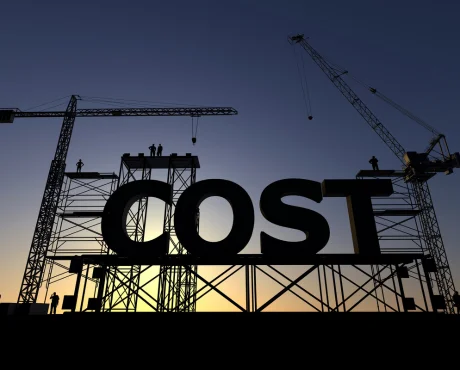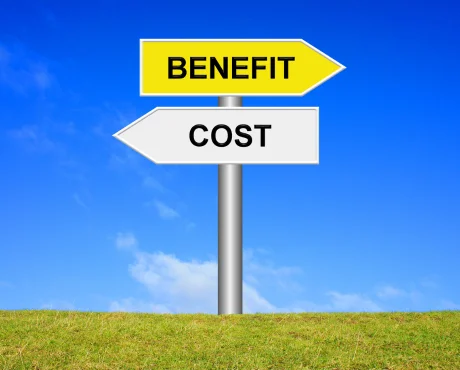Table of Contents
- Predictive Analytics and Its Role in Cost Management
- Why Cost Optimization Demands Predictive Insight
- How Predictive Analytics Enables Cost Optimization in Manufacturing
- Building the Digital Backbone: Infrastructure That Makes Predictive Analytics Work
- The Measurable Outcomes of Predictive Cost Strategy
- Internal Challenges That Derail Predictive Initiatives
- Best Practices for Rolling Out Predictive Cost Optimization
- How to Track and Communicate Cost Savings to Stakeholders
- Conclusion
Contemporary businesses face relentless pressure to manage costs with surgical precision, yet conventional techniques frequently result in blind spots and missed opportunities. Traditional budgeting and reactive cost-cutting no longer cut it.
Predictive analytics has emerged as a more discerning and forward-thinking strategy for smart cost optimization. It merges quantitative analysis with real-time insights to anticipate where, when, and how resources should be deployed, transforming cost management into an intelligent, strategy-driving capability. Let’s learn how to use predictive analytics in manufacturing.
Predictive Analytics and Its Role in Cost Management
Predictive analytics is the application of historical and real-time data, powered by statistical models and learning algorithms, to project future events, such as demand fluctuations, system failures, or price variations. Unlike post-mortem analyses, it operates ahead of problems, enabling organizations to orchestrate actions that forestall costs before they materialize.
For cost optimization, this means shifting from conjecture and episodic audits to a data-backed mechanism. Whether it’s forecasting the timing of a malfunctioning machine, projecting raw material requirements for the next quarter, or identifying inefficiencies in workflows, predictive analytics offers clarity and prescriptive power.
Why Cost Optimization Demands Predictive Insight
Operating margins have narrowed across industries. Between unpredictable commodity markets, escalating labor rates, and rising regulatory overhead, businesses face razor-thin flexibility. Reactive measures such as ad-hoc budget cuts can address symptoms but not underlying inefficiencies. In contrast, predictive analytics maps the full cost landscape:
- Highlighting Hidden Costs: Overutilized equipment, energy inefficiencies, and supply chain bottlenecks often remain invisible until they escalate into costly crises.
- Synchronizing Resource Allocation: Rather than reacting to supply delays or fluctuating demand, predictive models align inventory and production schedules with anticipated requirements.
- Accelerating Decision Cycles: Finance teams equipped with forward-looking cost scenarios can confidently steer investments and operations through volatility.
How Predictive Analytics Enables Cost Optimization in Manufacturing

1. Demand-Driven Inventory Management
By analyzing past sales patterns, market trends, and seasonal influences in detail, predictive systems can foresee demand spikes or soft patches weeks ahead. This leads to improved inventory turnover, a significant reduction in spoilage and obsolescence, and reduced carrying costs.
2. Proactive Asset and Maintenance Planning
Equipment failure often arises from subtle performance changes, such as vibration inconsistencies, deviations in operating temperatures, or pressure variations. Predictive maintenance platforms analyze these shifting patterns and provide precise guidance on when repairs should occur. This approach avoids both premature servicing and catastrophic breakdowns, thereby optimizing maintenance spend and equipment longevity.
3. Dynamic Procurement Strategy
Raw material prices fluctuate, and suppliers vary in performance. Predictive analytics tracks market indicators and historical supplier reliability to recommend when to lock in prices, which suppliers to prioritize, and how to structure contracts. The result is lower procurement expenses and fewer emergency purchases at inflated rates.
4. Financial Planning and Budget Optimization
Corporate finance functions traditionally rely on static forecasts. In contrast, predictive models produce rolling forecasts that adjust dynamically to real market signals such as currency swings, commodity price movements, or demand forecasts, helping to allocate CAPEX and OPEX more precisely and reduce financial buffer costs.
Building the Digital Backbone: Infrastructure That Makes Predictive Analytics Work
To support this transformation, companies need a robust foundation: data pipelines, modeling platforms, and cost optimization software with predictive analytics capabilities that integrate across operations.
- Data Storage and Integration: Collecting data from manufacturing sensors, ERP systems, CRM platforms, and external data feeds into a consistent, queryable structure.
- Modeling Platforms: Utilizing tools capable of handling large datasets and running complex algorithms, whether through Python/R-based analytics stacks, or enterprise solutions like Microsoft Azure ML or AWS SageMaker.
- Deployment Environment: Executing models either at the edge (on-premise, close to data sources) or in the cloud to reach a balance between latency requirements and scalability.
- Governance Frameworks: Ensuring data integrity, compliance, and continuous model validation through a structured governance process.
The key is alignment: data pipelines, model training, and deployment systems must operate in synchrony for predictive insights to be timely and actionable.
The Measurable Outcomes of Predictive Cost Strategy

Organizations that implement cost optimization software consistently report sharper forecasting, and faster decision cycle. More benefits include:
1. Waste Reduction
When inventory aligns closely with actual demand and procurement is opportunistic, waste is minimized, both in terms of expired goods and underutilized materials. Businesses report inventory cost reductions between 15% and 30% after deploying predictive techniques.
2. Equipment Uptime Maximization
Predictive maintenance preserves asset health, reducing unplanned downtimes. Operational continuity rises, and spare parts inventory shrinks, yielding substantial savings, often exceeding 20% in maintenance accounts.
3. Strategic Cost Planning
Rolling cost forecasts based on market indicators empower finance functions to plan strategically rather than reactively, enabling more effective capital allocation and less reliance on emergency funding or drastic cost-cutting measures.
Internal Challenges That Derail Predictive Initiatives
Data Fragmentation: Fragmented data across disconnected systems makes integrated analysis difficult. Organizations must invest in data harmonization mapping disparate data models, standardizing formats, and securing high-quality pipelines.
Talent and Mindset Barriers: Predictive analytics demands cross-disciplinary fluency, encompassing data science, operations, and finance. Bridging this gap requires thoughtful recruitment, hands-on training, and leadership buy-in to adopt insights as a standard for decision-making.
Organizational Integration: Siloed departments can hinder effective adoption. Finance, operations, and IT must collaborate through a shared analytics framework. Shared metrics, co-created roadmaps, and executive governance help link predictive tools to business value.
Best Practices for Rolling Out Predictive Cost Optimization
Begin with select use cases that promise both rapid and measurable return, such as inventory alignment in a key category or predictive maintenance on a critical asset. Use that initial success to demonstrate value, then scale methodically across cost domains.
Integrate feedback loops with end users such as procurement officers, plant managers, and finance analysts, to refine insights, build trust, and ensure that recommended actions are practical and effective. As new data is generated, models should be retrained regularly to maintain accuracy.
How to Track and Communicate Cost Savings to Stakeholders
Tracking tangible metrics ensures continued impact and organizational support:
- Monitor changes in inventory carrying costs associated with improvements in forecast accuracy.
- Track downtime incidents both before and after deployment to quantify improvements.
- Compare forecasted vs actual spend to validate the accuracy of cost projections.
- Utilize diagnostic dashboards to highlight the savings achieved through predictive actions.
When executives see a clear, quantifiable link between predictive insights and reduced expenditures, further investment becomes a natural next step.
Conclusion
Predictive analytics for smart cost optimization transcends traditional cost control methods. By highlighting inefficiencies, anticipating future needs, and enabling proactive decisions, it transforms cost management into a strategic asset. The benefits aren’t theoretical, they’re measurable: lower inventory, better asset utilization, precise forecasting, and strategic capital allocation.
Organizations that cultivate the data infrastructure, analytical capability, and executive alignment to integrate predictive insights effectively will outpace competitors. In a world where managing costs defines competitiveness, predictive analytics isn’t optional, it’s essential.





